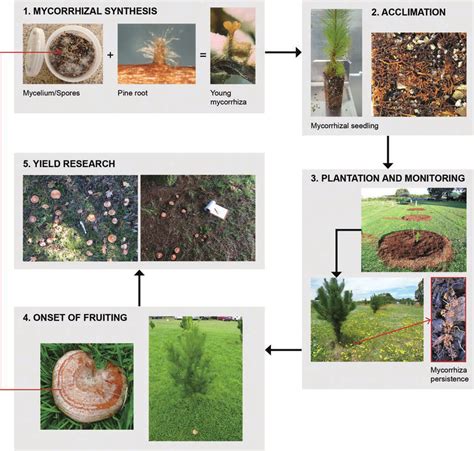Mycorrhizal fungi are a type of fungus that forms a mutually beneficial relationship with plants, known as mycorrhizae. Through this relationship, the fungus provides nutrients and water to the plant, while the plant provides carbohydrates to the fungus.

Mycorrhizal fungi are classified into two main types:
- Ectomycorrhizal fungi form a sheath around the roots of trees and other plants, creating a network of hyphae that extend into the soil.
- Endomycorrhizal fungi penetrate the roots of plants, forming arbuscules and vesicles within the root cells.
Mycorrhizal fungi are essential for the survival of many plants, particularly in nutrient-poor or water-stressed environments. They play a crucial role in nutrient cycling, water absorption, and soil structure.
Benefits of Mycorrhizal Fungi
The benefits of mycorrhizal fungi for plants include:
- Increased nutrient absorption: Mycorrhizal fungi have a vast network of hyphae that can extend far beyond the reach of plant roots, allowing them to access nutrients that are not available to the plant alone.
- Improved water uptake: The fungal hyphae can absorb water from the soil and transport it to the plant roots, which is especially beneficial during drought conditions.
- Reduced disease susceptibility: Mycorrhizal fungi can help plants resist pathogens by producing antimicrobial compounds and stimulating the plant’s immune system.
- Enhanced stress tolerance: Mycorrhizal fungi can help plants tolerate environmental stresses such as drought, salinity, and heavy metals.
Types of Mycorrhizal Fungi
There are various types of mycorrhizal fungi, each with its own unique characteristics:
- Arbuscular mycorrhizal fungi (AMF) are the most common type of mycorrhizal fungi, forming associations with over 80% of plant species. They penetrate the root cells of plants, forming arbuscules and vesicles.
- Ectomycorrhizal fungi (EMF) form a sheath around the roots of trees and other plants, creating a réseau of hyphae that extend into the soil.
- Orchid mycorrhizal fungi form associations with orchids, providing them with nutrients and water in exchange for carbohydrates.
- Ericaceous mycorrhizal fungi form associations with plants in the Ericaceae family, such as blueberries, cranberries, and rhododendrons.
Applications of Mycorrhizal Fungi
Mycorrhizal fungi have numerous applications in agriculture, horticulture, and environmental remediation:
- Improved crop yields: Inoculating crops with mycorrhizal fungi can increase yields by up to 30% by improving nutrient uptake, water stress tolerance, and disease resistance.
- Reduced fertilizer use: Mycorrhizal fungi can reduce the need for chemical fertilizers by providing plants with essential nutrients.
- Soil restoration: Mycorrhizal fungi can help restore degraded soils by improving nutrient cycling, water infiltration, and soil structure.
- Reforestation: Mycorrhizal fungi are essential for the establishment of trees in nutrient-poor or drought-stressed environments.
Tips and Tricks
- Use mycorrhizal inoculants to introduce beneficial fungi into your soil or planting mix.
- Amend your soil with organic matter to provide a food source for mycorrhizal fungi.
- Avoid using chemical fertilizers and pesticides, which can harm mycorrhizal fungi.
- Water your plants deeply and regularly to support the growth of mycorrhizal fungi.
Common Mistakes to Avoid
- Do not rely solely on mycorrhizal fungi to provide all of your plant’s nutrient needs.
- Do not plant mycorrhizal plants in soil that is already high in nutrients, as this can suppress the growth of the fungi.
- Do not overwater your plants, as this can drown the mycorrhizal fungi.
- Do not use chemical fertilizers or pesticides that are toxic to mycorrhizal fungi.
Conclusion
Mycorrhizal fungi are essential for the health and productivity of plants. By understanding the benefits and applications of these fungi, we can harness their power to improve crop yields, reduce fertilizer use, restore degraded soils, and promote reforestation.
